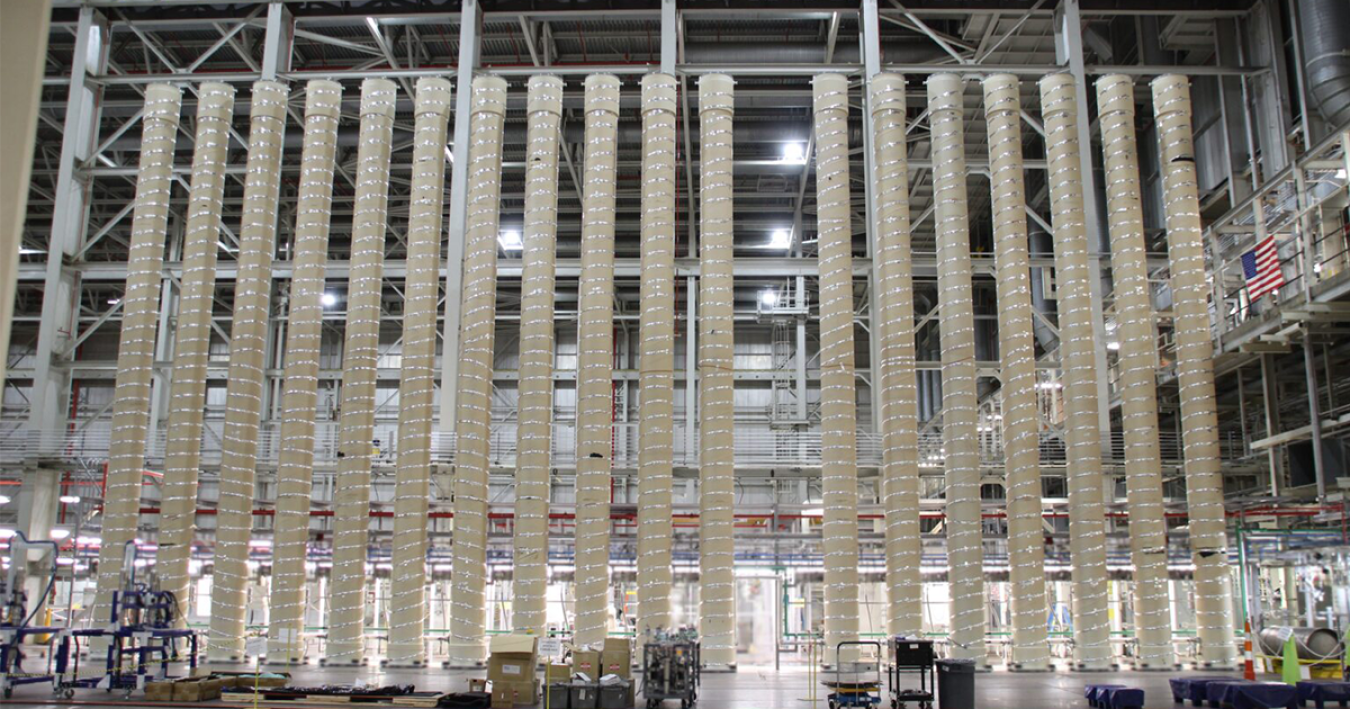 Enrichment operation have begun at the US Department of Energy’s (DOE’s) enrichment facility in Piketon, Ohio operated by American Centrifuge Operating (ACO), a subsidiary of Centrus Energy Corp (ACO). Doe said the demonstration project is on track to produce 20 kilograms of HALEU by the end of 2023.
Enrichment operation have begun at the US Department of Energy’s (DOE’s) enrichment facility in Piketon, Ohio operated by American Centrifuge Operating (ACO), a subsidiary of Centrus Energy Corp (ACO). Doe said the demonstration project is on track to produce 20 kilograms of HALEU by the end of 2023.
ACO completed its operational readiness reviews in June with the Nuclear Regulatory Commission NRC) and received approval to use uranium at the facility. Since then, it has been conducting final systems tests and other preparations to begin enriching limited quantities of uranium hexafluoride gas into HALEU. Production of the first HALEU material is expected within the next few weeks.
HALEU fuel contains uranium enriched to 5-20% uranium-235 (higher than the 3-5% typically used in light water reactors). It is required by most of the advanced reactor designs being developed under DOE’s Advanced Reactor Demonstration Program (ARDP).
Currently there is no commercial supply chain to support HALEU production, which prompted DOE to launch a programme to stimulate the development of a domestic supply. Under a competitively-awarded, cost-share contract signed DOE in 2022, Centrus was required to begin production of HALEU by the end of this year.
The work builds on a three-year project with DOE to manufacture and assemble 16 advanced centrifuges into an enrichment cascade. ACO expects to meet demonstration requirements by producing 20kg of 19.75% enriched HALEU by the end of the year. It will then continue production in 2024 at an annual production rate of 900 kg of HALEU a year, with options to produce more in future years.
“This moment holds great pride – and promise – for the nation,” said Centrus President & CEO Daniel Poneman. “We hope that this demonstration cascade will soon be joined by thousands of additional centrifuges right here in Piketon to produce the HALEU needed to fuel the next generation of advanced reactors, Low-Enriched-Uranium to sustain the existing fleet of reactors, and the enriched uranium needed to sustain our nuclear deterrent for generations to come. This is how the United States can recover its lost nuclear independence.”
Deputy Energy Secretary David Turk noted: “It’s remarkable what we can accomplish in the truly American public, private partnership model. For the first time ever, an American company is producing HALEU on American soil, providing critical fuel for advanced nuclear reactors, a statement that America’s committed to our energy security."
The HALEU will be used to help fuel the initial cores of two demonstration reactors awarded under ARDP and will also support fuel qualification and the testing of other new reactor designs.
The Piketon plant is currently the only US facility licensed to enrich uranium up to HALEU levels of 19.75%.
In addition to this demonstration project, DOE is supporting several efforts to provide more access to HALEU. Current activities include recycling used nuclear fuel from government-owned research reactors and acquiring HALEU through purchase agreements with domestic industry partners to spur demand for additional HALEU production and private investment in the nuclear fuel supply infrastructure.
In September, US-based BWX Technologies was contracted by DOE to process thousands of kilograms of government-owned scrap material containing enriched uranium into HALEU. The initial award will total $47m, with a total contract value of up to $116.5m, subject to annual congressional appropriations. BWXT will produce the HALEU over the next five years, with several hundred kilograms expected to be available as early as 2024.
DOE is also working to recycle used fuel from the closed EBR-II reactor to make HALEU. DOE plans to recover approximately 10 tonnes of HALEU from EBR-II fuel by December 2028 using an electrochemical process that was perfected over the years at Idaho National Laboratory (INL). EBR-II operated from 1964 to 1994 using a metallic alloy fuel containing highly enriched uranium (HEU).
US-based fission technology company Oklo has expressed interest in receiving five tonnes of HALEU pending a cooperative agreement with INL that was competitively awarded in 2019. The recovered material from EBR-II will be used in the initial core of its Aurora microreactor that is expected to be first demonstrated at the INL in 2026. DOE will retain ownership over the material before, during, and after its use.
Image: The HALEU cascade at the US Department of Energy’s enrichment facility in Piketon, Ohio (courtesy of Centrus)



